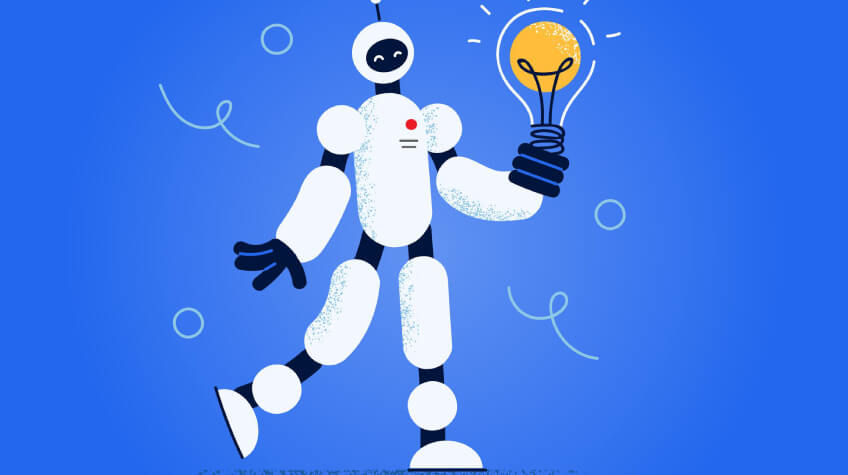Top 10 AI Chatbots for Automating Customer Support and Improving Experience
Top 10 AI Chatbots for Automating Customer Support and Improving Experience
Blog Article
Increase Involvement and Effectiveness Making Use Of AI Chatbots
As organizations significantly seek ingenious options to enhance functional efficiency and consumer interaction, AI chatbots emerge as a critical device in this change. The implementation of AI chatbots is not without its obstacles and subtleties.
Recognizing AI Chatbots
AI chatbots have actually transformed the means organizations interact with their clients, providing 24/7 support and engagement at range. These innovative software program applications make use of natural language processing (NLP) and artificial intelligence formulas to imitate human conversations, making them efficient in understanding and replying to user queries in actual time.
The design of AI chatbots typically consists of an individual interface, a backend handling system, and a data base. The customer interface enables consumers to input questions by means of text or voice, while the backend procedures these inputs, making use of NLP to figure out intent and context. The data base is a database of details that the chatbot can draw from to provide accurate responses.
AI chatbots can be categorized into two key classifications: rule-based and AI-driven. Rule-based chatbots adhere to predefined scripts and are limited in their conversational capabilities, while AI-driven chatbots leverage device finding out to enhance their communications gradually, allowing them to deal with more complex questions.
Incorporating AI chatbots right into client solution methods not only improves functional efficiency but also cultivates enhanced customer experiences via prompt and tailored interactions.
Advantages of AI Chatbots
The combination of chatbots right into customer care structures provides countless advantages that can considerably enhance organizational performance. Among the primary benefits is the ability to give 24/7 assistance, making sure that consumer queries are attended to immediately, no matter time areas or functioning hours. This constant schedule cultivates a greater degree of client complete satisfaction and retention.
In addition, AI chatbots improve operations by automating repeated tasks and handling a big quantity of inquiries concurrently. This performance not just lowers the work on human agents but likewise allows them to focus on more complex issues that require an individual touch. Companies can achieve much better resource allotment and improved efficiency.
Moreover, chatbots can assess consumer interactions and collect valuable data, allowing businesses to acquire understandings into client preferences and behavior. This information can educate advertising methods, product advancement, and overall service improvement.
Implementing AI Chatbots Properly
Effectively implementing AI chatbots calls for mindful planning and approach. Organizations has to first recognize particular objectives for the chatbot, such as enhancing customer service, simplifying operations, or offering instantaneous assistance. A detailed understanding of the target market is essential, enabling businesses to customize the chatbot's tone, language, and capability to satisfy official site user expectations.
Following, choosing the right platform and modern technology is important. Organizations needs to evaluate various chatbot structures, taking into consideration variables such as combination abilities, scalability, and ease of usage. top 10 ai chatbots. Furthermore, ensuring that the chatbot can flawlessly integrate with existing systems will boost general effectiveness
Creating an intuitive user experience is crucial for effective engagement. This consists of developing conversational flows that prepare for user requirements and offering clear motivates for interaction. Frequently upgrading the chatbot's expertise base and incorporating responses systems website here will even more improve its performance.

Gauging Involvement and Effectiveness
Examining the efficiency of AI chatbots is important for comprehending their effect on interaction and operational efficiency. Organizations needs to develop vital performance indications (KPIs) customized to their details purposes. Common metrics consist of customer interaction rates, reaction times, and resolution prices, which collectively provide understanding right into exactly how well the chatbot satisfies user requirements.
Interaction can be measured through metrics such as user retention, the frequency of interactions, and feedback rankings. Analyzing discussion logs can expose patterns in customer queries and identify locations for enhancement. Furthermore, evaluating user complete satisfaction through surveys can supply qualitative understandings into the chatbot's efficiency.
On the operational performance front, metrics like the reduction in human representative workload and the average cost per communication can highlight the chatbot's payment to source optimization. Furthermore, tracking the time taken to solve queries can aid identify bottlenecks in the process.
Consistently examining these metrics enables organizations to make data-driven Your Domain Name decisions, boosting chatbot functionality and user experience. By constantly measuring interaction and effectiveness, businesses can adapt their techniques to make best use of the advantages of AI chatbots, guaranteeing they stay an important asset in customer interactions.
Future Trends in AI Chatbots

An additional trend is the incorporation of machine discovering algorithms that permit chatbots to gain from past interactions and continuously improve their responses. This adaptive knowing procedure will enable chatbots to take care of complicated queries and give tailored services over time.
Furthermore, the surge of multichannel deployment will certainly see chatbots operating perfectly throughout different systems, such as social media, internet sites, and mobile applications. This omnichannel presence ensures that companies can involve consumers anywhere they are, boosting accessibility and user experience.
Lastly, an emphasis on honest AI concepts will certainly form the development of chatbots, stressing openness, information privacy, and prejudice reduction. As these fads create, companies can anticipate AI chatbots to come to be also more essential to their involvement and efficiency strategies, driving significant enhancements in customer interaction and functional effectiveness.
Verdict
In conclusion, AI chatbots represent a transformative force in enhancing involvement and performance within various sectors. As innovation continues to advance, the capacity for AI chatbots to drive company outcomes and streamline processes will only increase, forming the future of consumer service.
Report this page